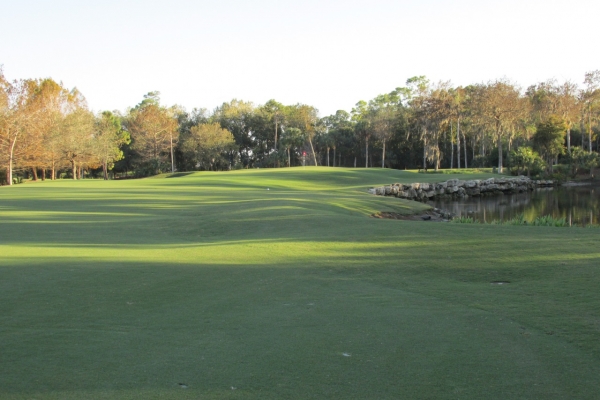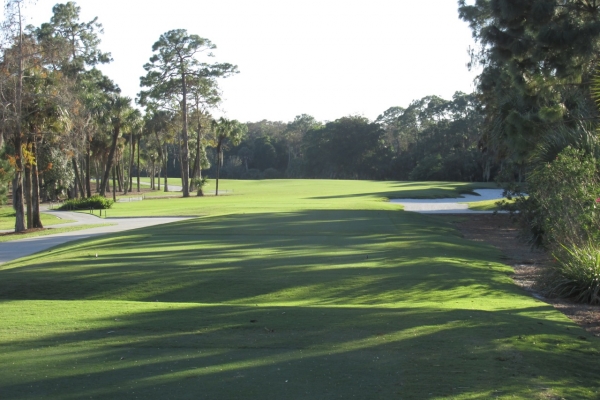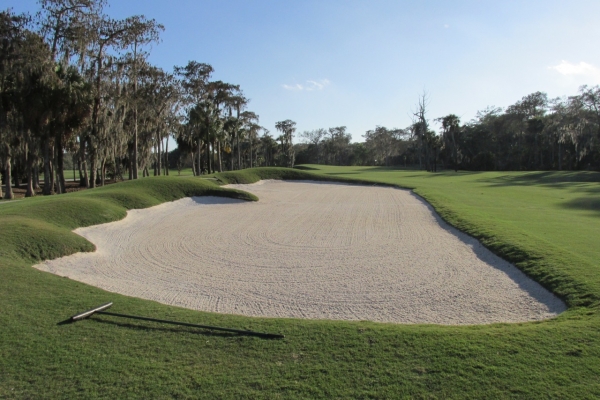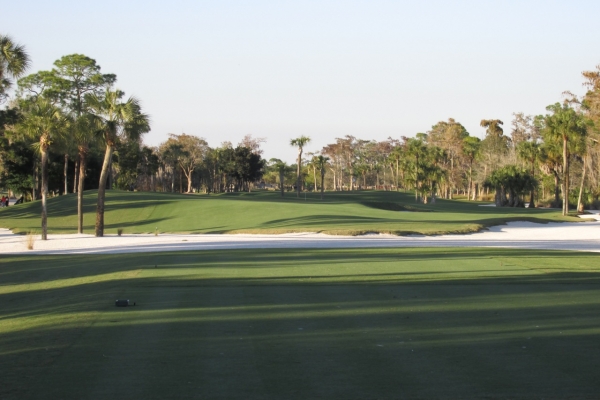NAPLES, Fla. — Ten of the 18 holes here on the Cypress Course at Royal Poinciana Golf Club have reopened for play following a comprehensive renovation (and reimagining) from architect Drew Rogers.
Working in close collaboration with superintendent Matt Taylor and Naples, Fla.-based Glase Construction, Rogers has thoroughly overhauled the strategies, agronomics and aesthetics that comprise the Cypress Course. The remaining 8 holes are scheduled to undergo a similar refurbishment in the summer of 2016.
“Before we started on the Cypress Course, it was clear to Matt, the club and myself that here was a striking, mature property where, unfortunately, the river systems, lagoons, wetlands and cypress hammocks really didn’t inform the identity of the golf holes,” said Rogers, who’s been working with the 36-hole Royal Poinciana GC, in various design capacities, for more than a decade. “Part of the issue was strictly visual: Each hole had been a fairly claustrophobic corridor, one that offered a single angle of play and no real sense of the amazing environment all around the golfer.
“With this renovation, we resolved to better integrate the golf experience with all of these attractive environmental features, while also addressing strategic value and playability. As is often the case, width was a big part of the solution. By widening each playing corridor to perimeters formed by these rivers, lagoons and wetlands, we created more room, presented new angles of play and revealed all sorts of amazing vistas.”
 The par-4 4th, now fully integrated; golf with the environment.
The par-4 4th, now fully integrated; golf with the environment.
Rogers said the 4th hole best illustrates the transformation. Here was featureless, “bowling-alley straight par-4” flanked by a river on one side and a lagoon on the other. “But the vegetation was so thick, you couldn’t see either one!” the architect explained.
“So, we opened it all up by doubling the fairway width and selectively thinning all that peripheral vegetation. In the foreground we created a big, sandy waste bunker that angles up to the river’s edge, on the right. There’s room to breathe out there now. And golfers can undertake multiple angles of attack — from tee to fairway, from fairway to green — because of that breathing room.”
Rogers first encountered the 36-hole Royal Poinciana GC in 2004, when still a partner with the firm led by Arthur Hills. Rogers oversaw a small project on the Cypress course that year, before undertaking a thorough, two-phase redesign of Royal Poinciana’s Pines Course. When the second phase broke ground in 2010, Rogers had formed his own design practice. Not surprisingly, the club asked that he oversee construction of his design.
With the Pines Course newly up to snuff, attention turned to the 44-year-old Cypress Course, which was due to be regrassed. This, Rogers said, was the impetus to tackle the layout’s larger design and sustainability issues.
 A comfortable, inviting tee shot to open the Cypress Course.
A comfortable, inviting tee shot to open the Cypress Course.
“At about the same time, the club had expressed concern about the irrigable areas out there on the old Cypress Course. The South Florida Water Management Authority has really clamped down of late. Each year it makes less and less water available to golf courses, including Royal Poinciana. We were already plotting a complete enhancement in identity for the Cypress. It made sense to take full advantage of this opportunity.”
While these first 10 holes on the Cypress Course have been completely regrassed — Champion ultradwarf bermuda on the greens; Celebration bermuda on the fairways — Rogers’ renovation also reduced the layout’s irrigable turf area by 6 acres (the turf footprint will shrink further when the remaining 8 holes are renovated). A brand new irrigation system, now in operation on the 10 new holes, will further advance irrigation efficiencies, Rogers said.
The final piece of this renovation puzzle was playability, and here Rogers deviated from standard practice.
 Bunkering character has been enhanced, like here on the 2nd hole.
Bunkering character has been enhanced, like here on the 2nd hole.
The common interpretation of ‘playability’, for all skill levels, is an emphasis on forward tees and shorter holes. But that’s only part of the issue,” Rogers said. “There are fewer bunkers and wider landing areas on the new holes at Cypress, and the greens are slightly larger. But we’ve also conducted slight shifts of those new greens to create bailout areas, on one side or the other, where golfers can land safely without having to clear a bunker or skirt a water hazard. This approach also allowed us to create a far wider variety of recovery options around the greens. Ultimately, our desire is for the players to gain greater enjoyment from their golf experience, all through providing more options.”
 Evening shadows highlight the strategic left-to-right contouring here on the par-3 8th.
Evening shadows highlight the strategic left-to-right contouring here on the par-3 8th.
Rogers cited the 8th green as a prime example of this new playability. In addition to blowing out the perimeter vegetation — creating views through to the 10th green and vice versa — the architect fashioned a modified, reverse Redan-style green whose famous contour (this putting surface template was pioneered by early American design icons C.B. McDonald and Seth Raynor) gives high handicappers the chance to run the ball on, even from the back tee some 200 yards away.
